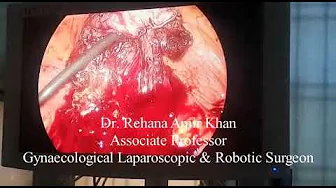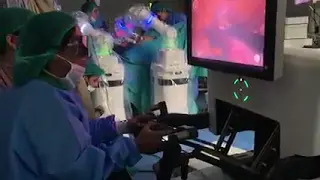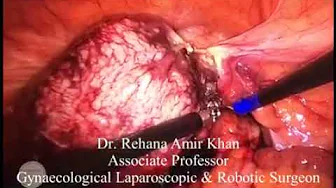Cesarean Section

CESAREAN SECTION
Are you Afraid of your C-Section?
With our best Gynecologist Surgeons, C-section is as safe as Vaginal Delivery when necessary to save life
Do Not Worry About Anything; You and Your Baby Are Safe With Us:
A cesarean section is necessary for your and your newborn's health in particular circumstances. If you want to know whether you are in need of a C-section, Our obstetrician will guide you thoroughly about the whole procedure and discuss the recovery process.
In some unplanned cesarean delivery cases, you may feel frustrated because your delivery didn't go as planned. We prefer what is best for you, vaginal birth or cesarean, as both lives are essential to us.
The best thing you can do after a C-section is to rest and let others help you recover.
Our Expert Gynecologist Surgeons are trained to handle complex cases of placenta praevia, placenta accreta, pregnancy with fibroid, and ovarian cyst patients.
Need To Know About C-Section; Here is a brief introduction.
A cesarean section is used to deliver a baby through surgical incisions in the abdomen and uterus. If there are any pregnancy complications, a planned C-section may be required. Women who have had C-sections once can have another C-section. However, the need for a first cesarean section is usually unclear until labor begins.
Complete Procedure of C-section
Doctors make surgical incisions in the abdomen and uterus to deliver the baby. A uterine incision is then made horizontally through the lower part of the uterus (low transverse incision). Other uterine incisions depend on the baby`s position within the uterus and whether there are other complications, such as placenta praevia or premature birth. The baby will be delivered. After all, the incision is closed with sutures.
If Doctors use a regional anesthetic, you are likely to hold a baby shortly after birth.
What to expect after C-section?
A cesarean section usually requires 2-3 days of hospitalization but our team opt the best techniques of cesarian with minimal manipulation, no use of electric current, no pack insertion so as patients can go home with in twenty four hours usually. Our doctor will discuss pain relief options with you.
After 12 to 15 hours, you will be encouraged to drink water and move around. It prevents constipation and deep vein thrombosis. Our doctor will monitor your incision for signs of infection. The bladder catheter may be removed as soon as possible.You can start breastfeeding as soon as you are ready, and our doctors will guide you in dealing with problems that arise after birth.
CESAREAN SECTION
Why We Go for The C-Section or Cesarian?
- Labor isn't progressing normally: The labor is not progressing correctly. Failure to go into labor (dystocia) is one of the most common causes of cesarean delivery. Developmental problems in labor include arrested dilation or prolonged second stage of labor (more extended time to push after the cervix is fully dilated).
- Low heartbeat in baby: Concerns about changes in your baby's heartbeat may make a cesarean section the safest option.
- Baby Position: C-section is the safest mode of delivery and is used for babies in transverse and breech positions.
- Twin pregnancy: Women who are pregnant with twins, triplets, or more may need a cesarean section. This is especially true if the labor starts early or the baby is not in the head-down position.
- Problem with the placenta: A cesarean section is recommended if the placenta covers the cervix (placenta Previa).
- Umbilical cord prolapse: Cesarean delivery may be recommended if the umbilical cord loop slips past the cervix in front of the baby.
- Health Concern: A cesarean is recommended for women with specific health problems, such as heart disease or brain disease.
- Blockage: Caesarean section may be caused by a large fibroid blocking the birth canal, a fractured pelvis, or a baby with an abnormally large head (severe hydrocephalus).
- Previous C-section or another uterine operation. Whether vaginal delivery is possible after a cesarean section or not, our doctor will assess you and discuss with you accordingly.
CESAREAN SECTION
Possible Risk in Cesarean
As with other types of major surgery, a cesarean section has many risks.
Risks to children include:
Risk of all these complications during cesarian section is minimal to zero in expert hand
Signs of infection
If you have any one of these symptoms, call our doctors immediately Redness, swelling, or leakage from the incision, fever, heavy bleeding, severe pain.
Visit our doctor or our Clinic
Please stay connected with our doctor for six weeks after your childbirth, within 6 weeks of giving birth, visit us for a postpartum evaluation. During this appointment, our doctor will monitor your mood and emotional health, discuss contraception and birth spacing, review baby care and nutrition information, and discuss your sleep habits and related issues. Fatigue and perform a physical examination, including a Pap smear if necessary. It’s time. This may include examining the abdomen and vagina.
Frequent Questions About C-section
You will be under anesthesia, preventing you from feeling any pain.
A cesarean section can be planned if necessary for medical reasons or unscheduled during labor if specific problems arise.
Vaginal delivery is usually preferred, but sometimes, a cesarean section is the only safe option. For example, a C-section is the safest option when your baby is breech or with placenta previa.
A typical C-section takes about 45 minutes from start to finish. After your doctor gives birth to baby, your uterus will be sutured, and the incision in your abdomen will be closed. Various types of emergencies can occur during labor like low heart beat in this situation your baby will be born within 15 minutes. This is an emergency cesarean section.
As with vaginal birth, your obstetrician will deliver the placenta after your baby is born. Next, our doctor will suture your uterus and stitch your abdominal muscles. The stitches dissolve naturally, but the staples will be removed at the hospital in about a week. Your stomach hurts for a few days to a few weeks. In some cases, our doctors prescribe more potent pain relievers.
When you get home, you can expect to limit your activities, relax, and trust your family and friends.
Once the anesthesia wears off, you will feel pain in the incision. You may also have gas and difficulty breathing deeply. Make sure you have an adult present to help you get out of bed for the first few days after your C-section.
Complete recovery may take four to six weeks. Doctors recommend avoiding stepping, weightlifting, exercise, and other strenuous activities for a few weeks. You may experience cramping and bleeding for up to six weeks and discomfort around the incision. Pain medication can relieve your pain.
Most people who have had a cesarean section can consider a vaginal delivery in a future pregnancy. Your chances of having a vaginal birth after a cesarean section significantly increase if you meet the following criteria:
Our doctor will discuss and decide whether you are candidate for vaginal birth after cesarian section or not
If you have an infection at your C-section incision, contact us
Red or swollen incision, Pus or leaking discharge from the incision, fever or worsening pain. Other signs of a problem include heavy bleeding or severe pelvic pain and cramping.
The level of pain you experience during labor is different. During a cesarean section, you will not feel much pain. However, recovery from a cesarean section can be more painful and take longer than recovery from natural birth. There is no right or wrong answer as to which is more painful because every delivery is different.
The number of C-sections you can have depends on your medical and pregnancy history. The exact numbers have yet to be agreed upon. Each surgery may be more complicated due to previous incisions or scars.




